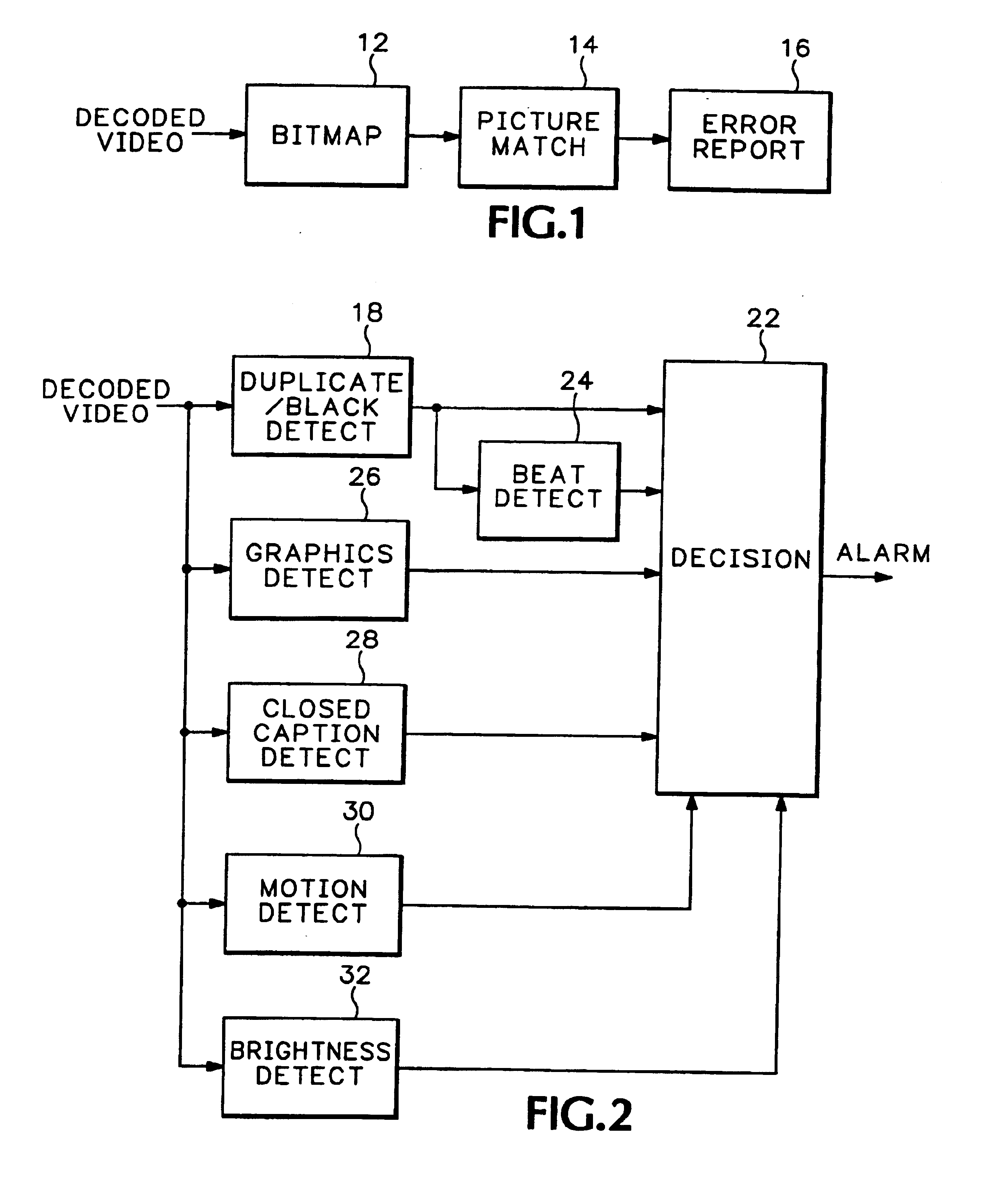Detecting content based defects in a video stream
a video stream and content technology, applied in the field of video stream compression processing, can solve the problems of decoder ability, black or duplicate frame excess, channel starvation,
- Summary
- Abstract
- Description
- Claims
- Application Information
AI Technical Summary
Benefits of technology
Problems solved by technology
Method used
Image
Examples
Embodiment Construction
[0009]The purpose of this invention is to provide a simple video content alarm intended to bring quickly to an operator's attention a potential error in one of hundreds of video streams. Referring to FIG. 1 a decoded video stream input is captured as a bitmap 12. Each field from the bitmap 12 is compared in a picture match module 14 with a black field or a corresponding field from a previous frame. The output from the picture match module 14 is input to an error reporting module 16 that includes timers to give a separate alarm when either the black or duplicate field remains for over a user-specified period of time, usually several seconds. The alarm for continuous black fields is termed Loss of Service (LOS), and the alarm for extended duplicate fields is termed Freeze Frame.
[0010]Alternatively the user may select to have the error reporting module 16 raise an alarm when a small group of identical fields is detected in a sequence of otherwise different fields. This detects Duplicat...
PUM
 Login to View More
Login to View More Abstract
Description
Claims
Application Information
 Login to View More
Login to View More - R&D
- Intellectual Property
- Life Sciences
- Materials
- Tech Scout
- Unparalleled Data Quality
- Higher Quality Content
- 60% Fewer Hallucinations
Browse by: Latest US Patents, China's latest patents, Technical Efficacy Thesaurus, Application Domain, Technology Topic, Popular Technical Reports.
© 2025 PatSnap. All rights reserved.Legal|Privacy policy|Modern Slavery Act Transparency Statement|Sitemap|About US| Contact US: help@patsnap.com


